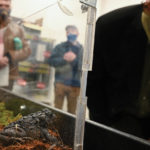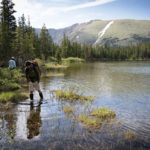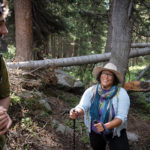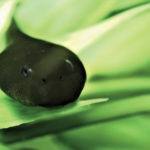Attention Volunteers: Our second season of boreal toad monitoring is here at last! Sign up is now available for our 2023 Team Toad Field Days, just fill out the form linked in the 'Join Team Toad' box.
Colorado’s boreal toads are in trouble and we need your help to save them!
As deadly chytrid fungus continues to spread from wetland to wetland, boreal toads need our help if they’re going to survive. In collaboration with Colorado Parks and Wildlife, Denver Zoo is taking two conservation actions to bring boreal toads back from the brink in Colorado:
Breeding + Release. To prevent boreal toad populations from completely disappearing, we are using our animal care expertise to breed these native amphibians at Denver Zoo and then release the tadpoles into the wild. This will also give wild populations more of a chance to build genetic resistance to chytrid.
Community Science. To save the boreal toad, we need to understand how they are doing in Colorado, and that’s where you come in! In the summer months, volunteer community scientists on the Boreal Toad Conservation Team help us to search the mountain wetlands of Colorado for this hard-to-find amphibian. The data us and our volunteers gather in this projects informs CPW's management of boreal toads, identifies future sites for wild reintroduction, and uncovers unknown populations (and we hope even ‘super-toads’ that may have natural resistance to chytrid fungus).
Learn more about boreal toad conservation and how you can be a part of it by clicking on the boxes below!
And if exploring mountain wetlands in search of a lumpy little toad sounds fun, sign up below! We'd love to have you on Team Toad!





